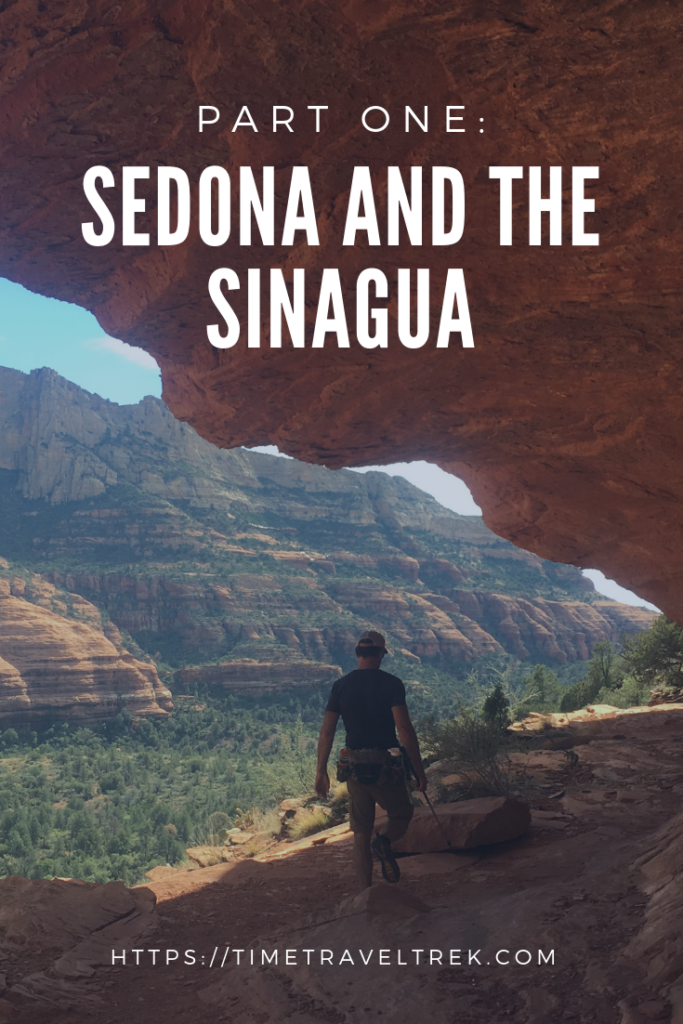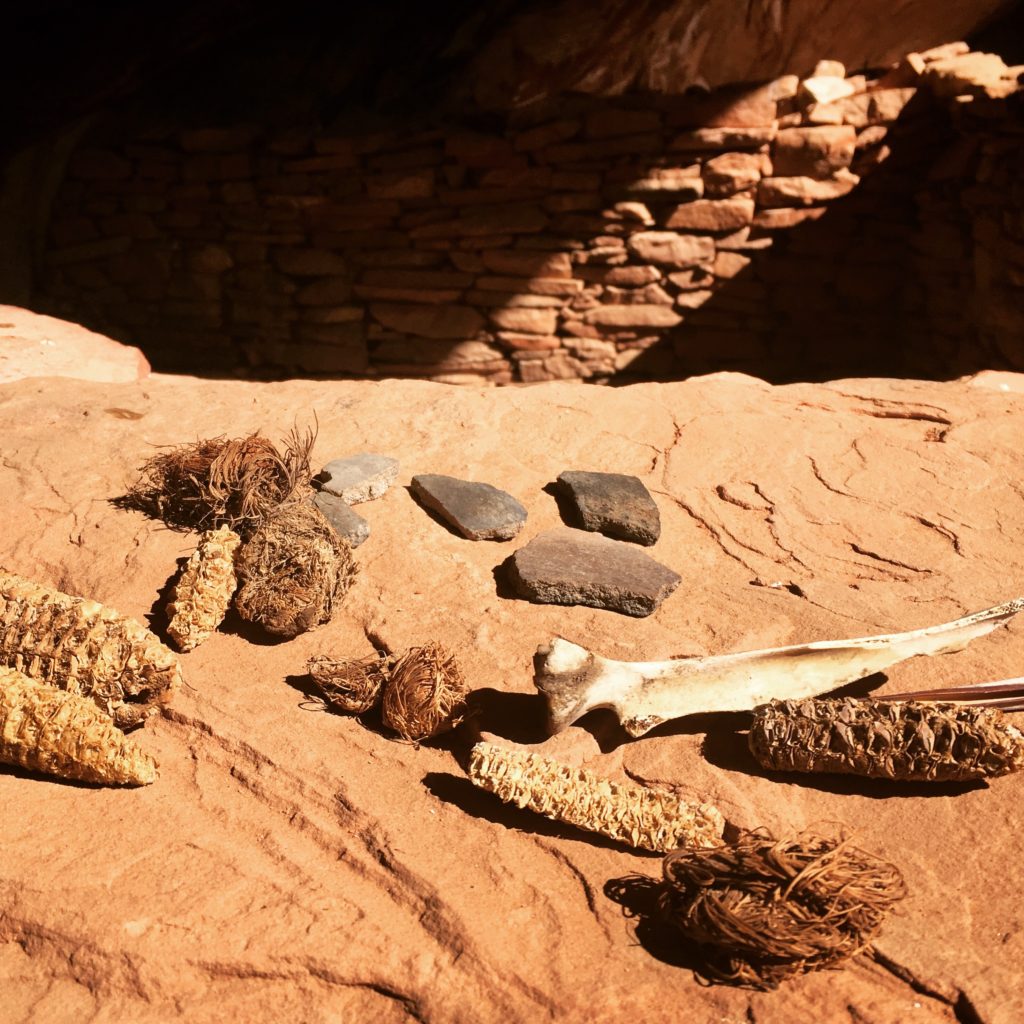Sedona, Arizona – it’s T-shirt shops, vortex power and pink jeeps tours. The town is crowded with a steady flow of tourists. Some are searching for a connection to the magical powers of this corner of the southwest. For others, commercialism is a driving force.
The immediate Sedona area has always had a strangely negative energy for us in the past, a reverse vortex. We usually can’t wait to move on, but this time something was different. We headed off the thoroughfare and down a long dirt road. Suddenly everything clicked. We found ourselves connecting to the energy of the past by venturing deep into the land of the Sinagua.
Disclosure: This post contains Affiliate Links.

Palatki Ruins
The highway sign gave a phone number for reservations. Palatki Ruins hadn’t been on our radar as a must-see stop, but an archaeological site that can only be visited by reservation makes us pay closer attention. It jumps to top of our list. We call and snag two spaces for the 10:30 a.m. tour the next day.
It’s about an hour drive from our base camp in Dead Horse Ranch State Park in nearby Cottonwood, so we’re up early. Keeners! Heading down the dusty, red road we passed random campsites, at first full to capacity and then with diminishing numbers of camping units as the road became bumpy and rutted from recent rains. At the signed “Y” we turned right for the final half mile into the site. The small red rock canyon glows in the morning light. Birds twitter in the junipers.
 Best Easy Day Hikes Sedona ...Shop on Amazon
Best Easy Day Hikes Sedona ...Shop on Amazon  SINAGUA: Signaua (Prehistor...Shop on Amazon
SINAGUA: Signaua (Prehistor...Shop on Amazon
People of the Red Rocks
Archaeologists named these Hopi ancestors, the Sinagua. The Sinagua came to the Sedona area over 1350 years ago. Their civilization grew steadily to peak period between A.D. 1150 and 1250. They farmed, hunted and collected resources from the land. Tuzigoot, Palatki – and its sister site Honanki – were among the largest and most important communities in the area west of Sedona.
This day, we’re gathered with seven others at the visitor centre, once the 1920s-era home of rancher Charles Willard. Heading up the short, ¼ mile path to the base of the red rock cliffs, we meet Clay, our volunteer guide. He points out the white shield on the cliff above the west ruins. Some archaeologists believe these shields are symbols of familial ties, representing a clan.
Palatki means “red house.” There are two sets of buildings at Palatki. The west alcove, closed to help preserve the fragile remains, consists of around five tumbled rooms, including what may have been a ceremonial room known as a kiva. The east alcove also has five time-worn rooms, three of which had second stories.
After letting us have a quick peek into the main floor of the east ruins, Clay brings out a small metal box. In it, he has a few artifacts that he uses to help interpret the site and the story of the Sinagua. We’ve been exploring the southwest for almost 30 years and seen a ton of potsherds, bits of rope made from yucca plants, and corncobs. But – we’d not seen a quid until Clay held one up.
Quid it!
Quids are the fibrous spitballs left after agave leaves are chewed. Who knew? Apparently quids are a common find in cliffside caves in the land of the Sinagua.

“Want to hold it,” Clay asked the only kid on the tour.
Spitballs. It’s a kind of gross, but entirely captivating, and a tangible vestige of a civilization that is long gone. Like rock ruins, pictographs, petroglyphs, potsherds and corncobs, quids provide an immediate connection to the past.
In his book, Finders Keepers,author Craig Childs write eloquently about the connectivity of all artifacts:
“These objects are calling cards from home landscapes. When they are removed, the markers of those places are lost. We look down to see who has been here before us, the knowledge not only for our own edification but for a transmission from the past, a voice for those who once occupies this land. When we look down and they are gone, so are the people.”
Today, it felt like the people were right here, holding our hands as we climbed up to the Grotto above the ranch house. Here our volunteer guide, Ruti, interpreted the pictographs gracing the walls before allowing us to wander into the stone cave house that Charles Willard built to live in during his first year of homesteading in the canyon.
But my mind is still stuck on quids.
I want to see more, in situ, not trapped in an interpreter’s box of tricks. I want that to strengthen that connection. The quest is on!
Leave a Reply